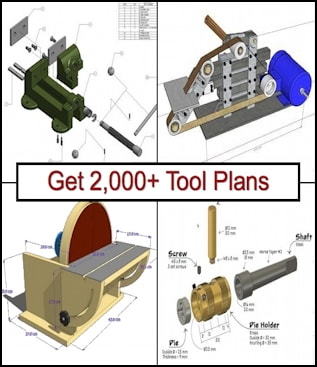This article explains how I held a part so mounting holes could be precisely located. The part looks like a circle with a flat on it.
If you are interested, please see
http://rick.sparber.org/FAS.pdf


This article explains how I held a part so mounting holes could be precisely located. The part looks like a circle with a flat on it.
If you are interested, please see
http://rick.sparber.org/FAS.pdf

Thanks Rick! I've added your Semicircle Fixturing Method to our Measuring and Marking and Milling categories, as well as to your builder page: Rick Sparber's Homemade Tools. Your receipt:

Did the 1-2-3 block help you square the top of the part? It seems that it might actually get in the way, trying to rotate the part while maintaining contact with the block.
Since the movable vise jaw is not in contact with the 1-2-3 block, and the 1-2-3 block is only (?) to locate the edge of the part, couldn't you clamp the squared part, then slide the 1-2-3 block in to locate the edge, then remove the block before you did the drilling?
Thanks Rick for a very good walk-thru - very methodical and easy-to-follow write-up!
Apologies for probably stating some redundant and/ or undemanded info here:
The resistance contact measuring method is clever indeed, but shouldn't your entire mill be safety grounded?
I. e. The foundation and table should be grounded together with quill and chuck - and thus measure <1 Ohm.
Most chuck mount contact measuring devices I know of use this very fact to even function in the first place.
Having the quill/ chuck ungrounded developing a fault at live voltage, could mean real trouble.
Being a "concerned electrician" (amongst other duties) in a Arts Uni*, I'm on constant vigil in these aspects.
-Have fun and be safe!
Johan
*I could probably start an entire sub-forum with stories of "When Electricity meets Artist's Creative Juices"...
Saved quite a few BAs and even an odd PhD candidate from blind dates with Darwin (and Dunning-Kruger) thru the years.
"Sheer luck" is not a proper Health & Safety practice in any workplace.
Sleykin (Aug 14, 2021)
Johan,
My mill is grounded. I would NEVER have it any other way.
The resistance measuring device is battery powered and floats. It is just an ohm meter except that it is measuring very small resistances.
If you measure between quill and table with a common ohm meter, you will read zero. But if you are looking with a meter that can read milliohms, it is a different story. You can read more about this subject at https://rick.sparber.org/electronics/ReadMeEEF.pdf.
Rick

Rick
There are currently 1 users browsing this thread. (0 members and 1 guests)
Bookmarks